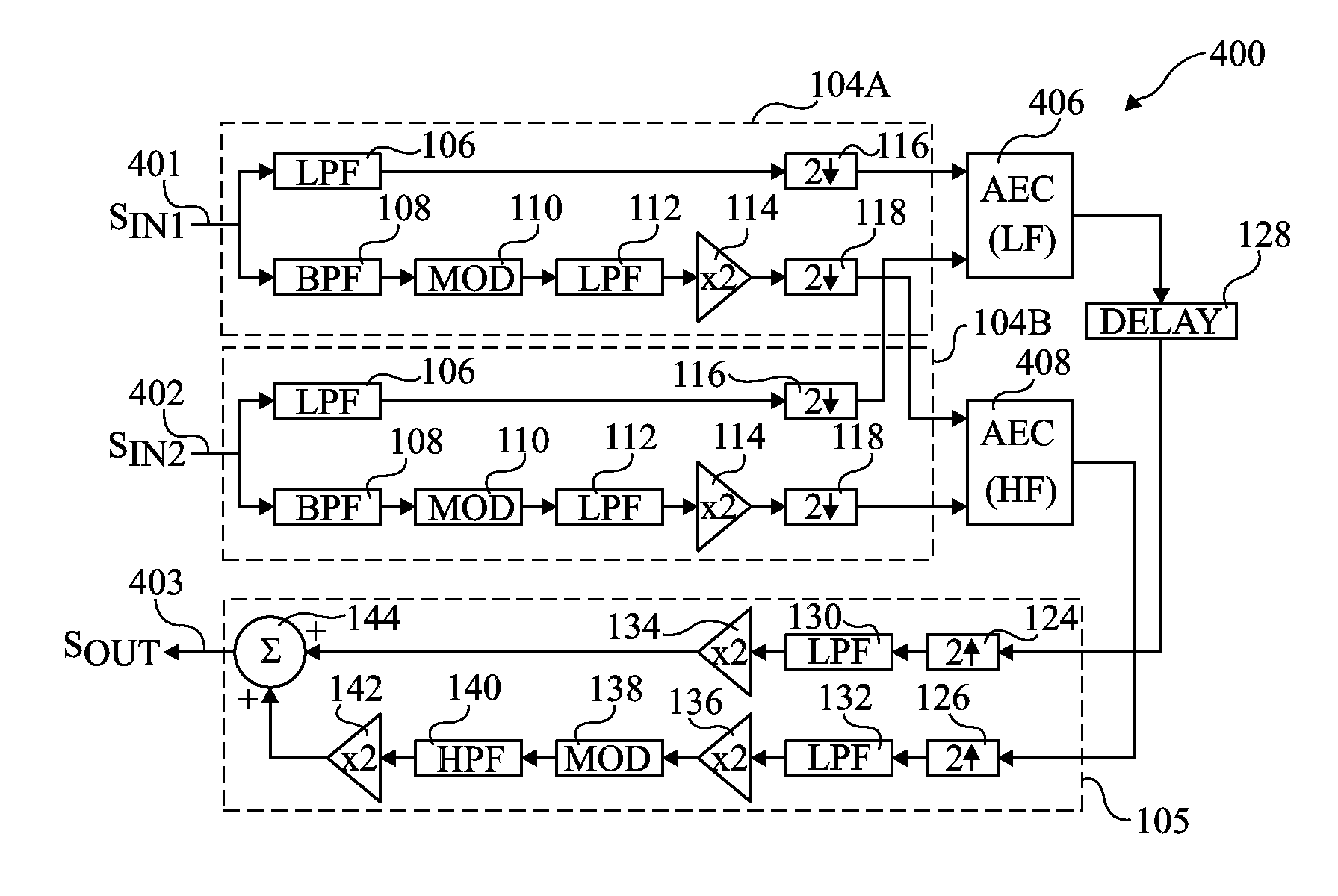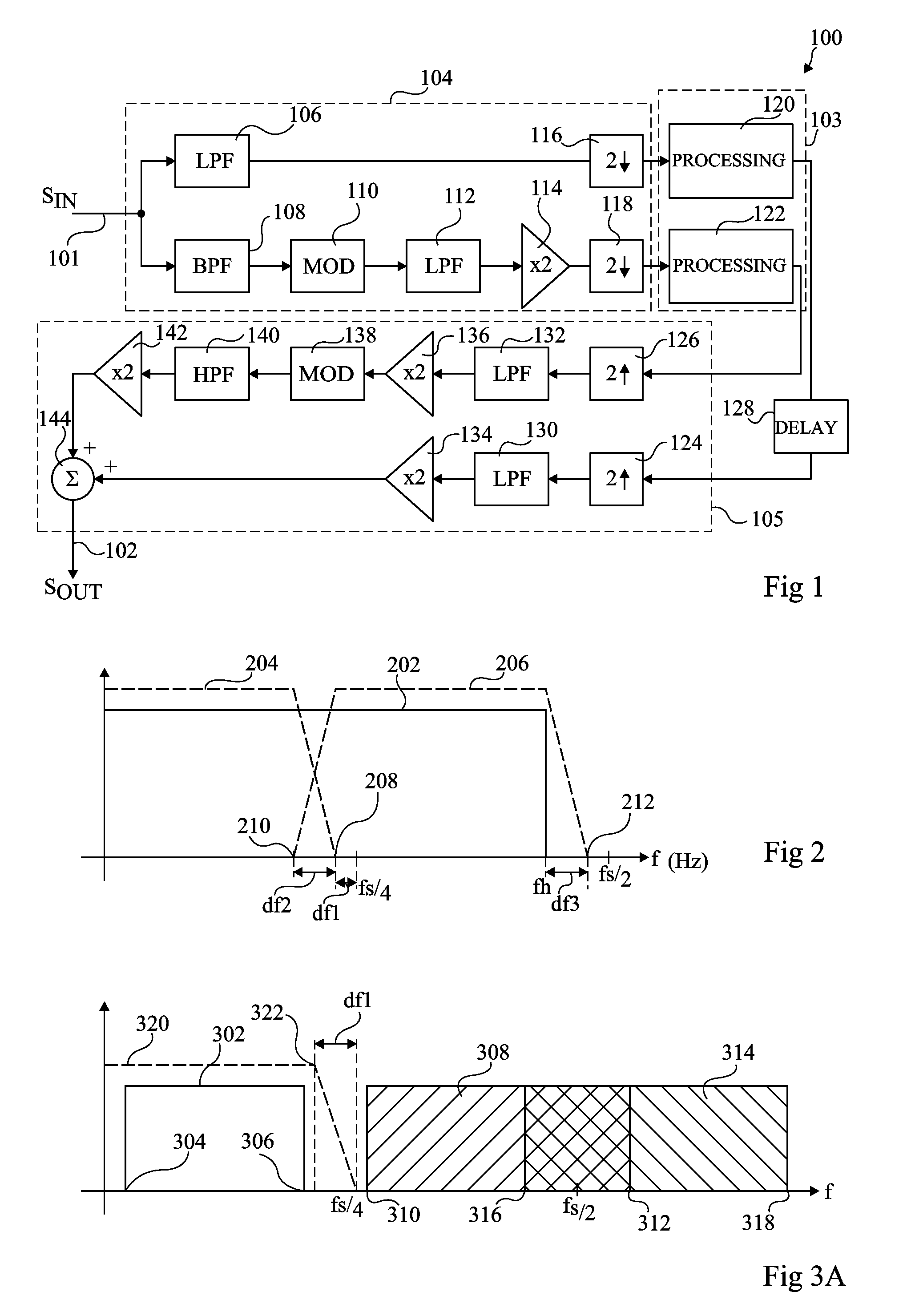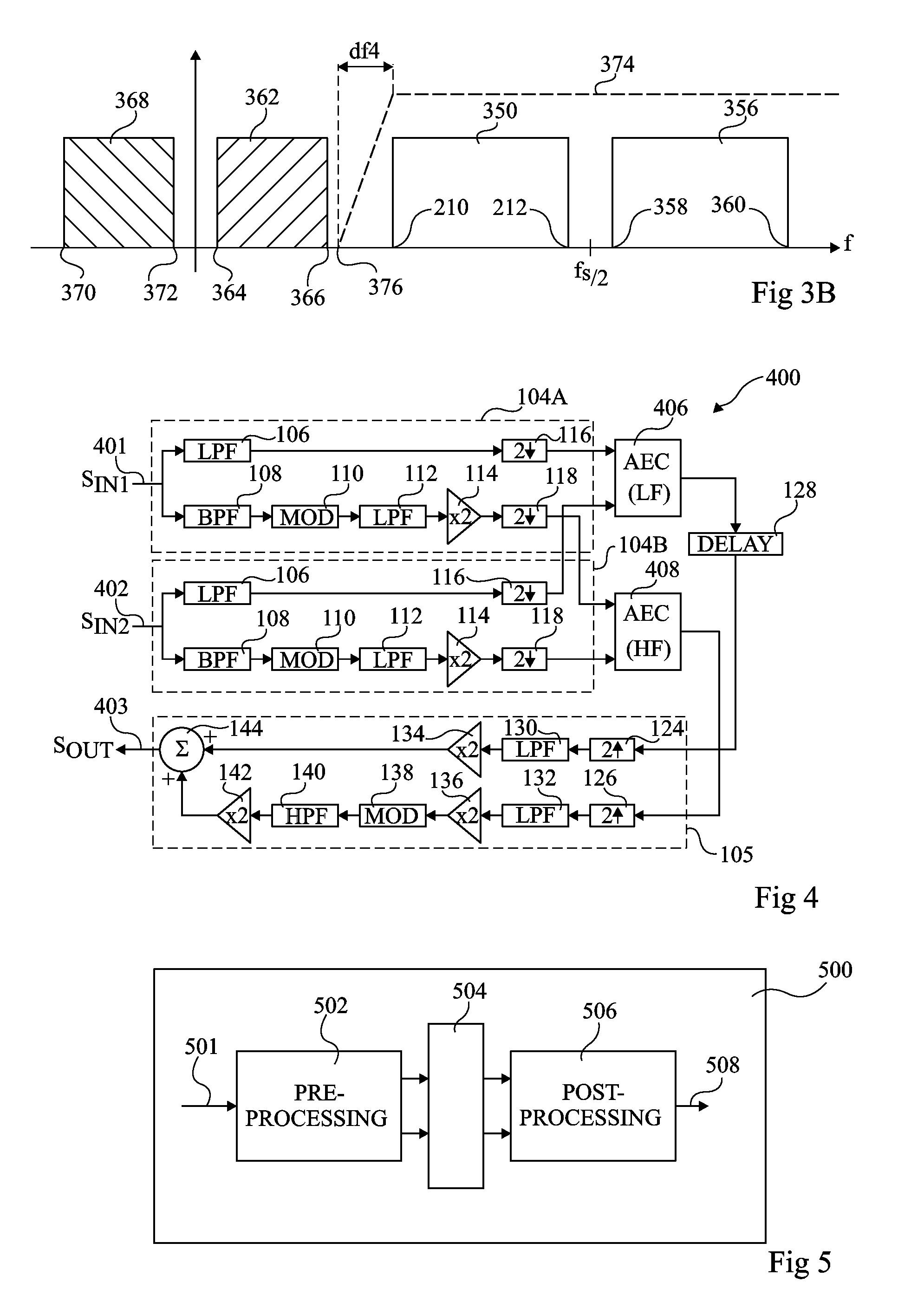Wide-band signal processor
a signal processor and wide-band technology, applied in the field of digital signal processor and method for processing input signals, can solve the problems of increasing the number of input signal samples, increasing power consumption, and complex processing of input signals
- Summary
- Abstract
- Description
- Claims
- Application Information
AI Technical Summary
Benefits of technology
Problems solved by technology
Method used
Image
Examples
Embodiment Construction
[0028]FIG. 1 illustrates a digital signal processor 100, comprising an input line 101 for receiving a digital input signal SIN, and an output line 102 for providing a digital output signal SOUT. The signal processor 100 further comprises processing circuitry 103 for processing the input signal SIN to generate the output signal SOUT. The input signal SIN is first processed by pre-processing circuitry 104 before being provided to processing circuitry 103, and signals generated by processing circuitry 103 are processed by post-processing circuitry 105 before being output as the signal SOUT.
[0029]The input signal SIN for example relates to an audio signal and comprises digital samples corresponding to a sampling rate fs, which is for example in the range 8 kHz to around 200 kHz, and for example at 16 kHz. For example, the input signal results from digitally sampling an analog signal at over twice the Nyquist frequency, the digital samples for example being provided directly to the input...
PUM
 Login to View More
Login to View More Abstract
Description
Claims
Application Information
 Login to View More
Login to View More - R&D
- Intellectual Property
- Life Sciences
- Materials
- Tech Scout
- Unparalleled Data Quality
- Higher Quality Content
- 60% Fewer Hallucinations
Browse by: Latest US Patents, China's latest patents, Technical Efficacy Thesaurus, Application Domain, Technology Topic, Popular Technical Reports.
© 2025 PatSnap. All rights reserved.Legal|Privacy policy|Modern Slavery Act Transparency Statement|Sitemap|About US| Contact US: help@patsnap.com



